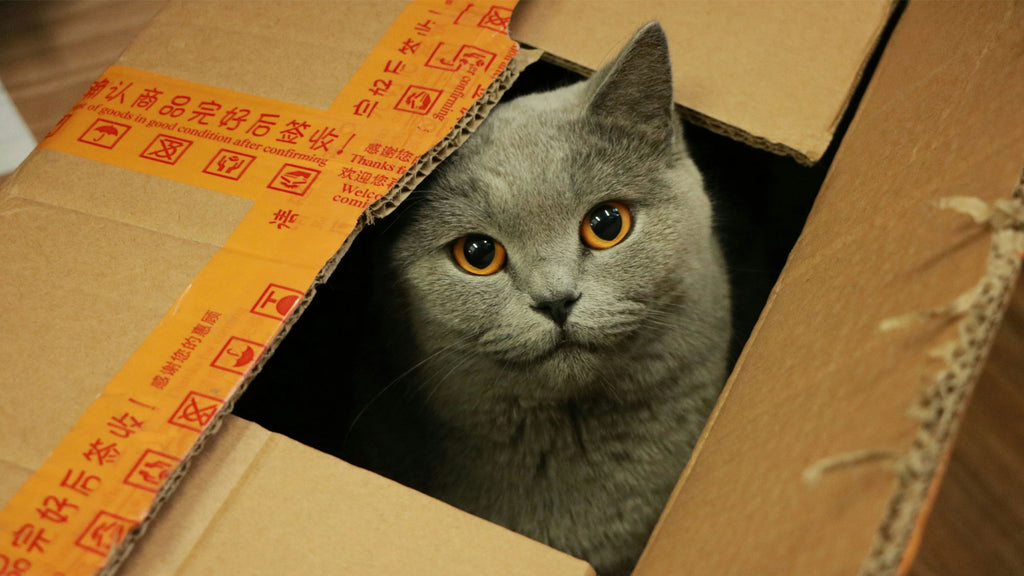Moving home with pets is also difficult to manage for us owners so it’s best to ensure you are as prepared as possible. Whether you're relocating across town or to a completely new city, taking proactive steps to ensure a smooth transition for your pets is crucial. In this guide, we'll share valuable tips and insights on how to make the moving process as stress-free as possible for your beloved animals.

1. Preparation is Key:
Before the move, take time to prepare your pets for the upcoming changes. Here's what you can do:
- Gradually introduce moving boxes and packing materials so they become familiar with the sights and smells
- Keep their routine as normal as possible, maintaining regular feeding, walking, and play schedules
- If your pet is particularly anxious, consult with your vet about possible solutions, such as calming supplements
2. Visit the Vet:
Schedule a visit to the vet well in advance of the move. Ensure your pet's vaccinations are up-to-date, especially if you're moving to a new area with different health risks. Discuss the possibility of microchipping, as this can be a lifesaver if your pet becomes lost during the move or as you settle in.
3. Secure Pet-Friendly Accommodation:
If you're staying in a hotel or temporary accommodation during the move, confirm that the place is pet-friendly when you book. Bring familiar items such as their bed, toys, and bowls to create a sense of home.
4. Create a Safe Space:
On moving day, set up a designated area where your pet can feel safe. Use a quiet room with their bed, toys, and food and water bowls. Make sure the room is the last to be packed and the first to be unpacked.
5. Travel Comfortably:
Whether you're driving or getting a ferry over, make sure your pet is comfortable during the move. Use a well-ventilated carrier for smaller animals. For longer journeys, plan rest stops to allow your pet to stretch their legs and relieve themselves.
Contrary to moving with dogs and cats, smaller mammals like rabbits are relatively easy to relocate. However, you must remember to stop your car from becoming too hot; rabbits in particular don’t respond well to high temperatures. Heat stroke is one of the biggest issues to watch out for, so you have to prevent your car temperature from exceeding 23°C.
6. Moving Aquariums & Terrariums
Aquariums usually present quite the challenge. Because of their delicate nature, fish don’t normally do well during moves. Some would suggest that you give them away. However, if you’re careful enough, you’ll be able to bring them. What you’ll want to do first is locate a fitting container for them. If there are any live plants inside your tank, place them and some of the tank’s water inside your receptacle.
Aquariums usually present quite the challenge. Because of their delicate nature, fish don’t normally do well during moves. Some would suggest that you give them away. However, if you’re careful enough, you’ll be able to bring them. What you’ll want to do first is locate a fitting container for them. If there are any live plants inside your tank, place them and some of the tank’s water inside your receptacle.
7. Cages
You should invest in a decent cage for your animal as well, along with a sufficient amount of water and food cups. This will allow you to keep track of it and stop it from becoming an obstruction once the heavy lifting begins. See to it that your travel carrier is positioned on an even surface and drive your car as smoothly as possible when transporting animals.
8. Update Identification:
Ensure your pet's identification & microchipping information is up to date. Update their collar tags with your new address and contact information. If you've moved a significant distance, consider getting a new ID tag with local details.
9. Settling into the New Home:
Once you've arrived at your new home, focus on helping your pet acclimatise. Start by confining them to one or two rooms, gradually expanding their access. Re-establish their routine as quickly as possible, including feeding and playtime.
Moving with pets requires careful planning and consideration, but with the right approach, you can make the experience positive for both you and your animals. By prioritising their comfort, maintaining routines, and providing reassurance, you'll help your pets adjust to their new home seamlessly. After all, a happy pet makes for a happy home!
Contact Us
At Hanlon Bros we are experts in all aspects of moving house, so contact us today to make sure your plants are moved properly.






